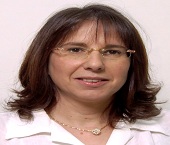Day 2 :
Keynote Forum
Diana Anderson
University of Bradford, UK
Keynote: Diethylstilbestrol-induced oxidative DNA damage in spermatogonial stem cells in vitro
Time : 09:45-10:15

Biography:
Abstract:
Keynote Forum
Georg F Weber
University of Cincinnati, USA
Keynote: Genetic programs of cancer progression
Time : 10:30-11:00

Biography:
Abstract:
- Stem Cells | Stem Cell Therapy | Stem Cell Biomarkers | Cellular Therapies | Stem Cells and Cancer | Cell and Organ Regeneration | Cell Differentiation and Disease Modeling | Stem Cell Plasticity and Reprogramming | Tumor Cell Science
Location: Orlando

Chair
Paul J Davis
Albany Medical College, USA

Co-Chair
Haval Shirwan
University of Louisville, USA
Session Introduction
Brian Mehling
Blue Horizon International LLC, USA
Title: Analysis of outcomes following mesenchymal stem cell therapy in subjects with musculoskeletal conditions
Time : 12:20-12:40

Biography:
Abstract:
Margarita Glazova
Russian Academy of Science, Russia
Title: Hippocampal neurogenesis in rats genetically prone to audiogenic seizure

Biography:
Abstract:
Mei Wan
The Johns Hopkins University, USA
Title: Lineage fate determination of MSCs in tissue repair/ remodeling

Biography:
Abstract:
Aletta Schnitzler
EMD Millipore Corporation, USA
Title: Single use technologies support large scale manufacturing of cellular therapies

Biography:
Abstract:

Biography:
Abstract:
Meenakshi Chellaiah
University of Maryland Dental School, USA
Title: Identification of Expression of Putative Cancer Stem Cell Markers in Prostate Cancer

Biography:
Abstract:
Željka VeÄerić-Haler
University Medical Centre Ljubljana, Slovenia
Title: Protective effect of T cell depletion anticipating mesenchymal stem cell transplantation in acute kidney injury mice model
Biography:
Abstract:
Michael Schmutzer
University of Munich, Germany
Title: Cell compaction influences the regenerative potential of passaged bovine articular chondrocytes in an ex vivo cartilage defect model
Biography:
Abstract:

Biography:
Abstract:
Helen McGettrick
University of Birmingham, UK
Title: Adipogenic differentiation of MSC alters their immunomodulatory properties in a tissue-specific manner

Biography:
Abstract:

Biography:
Abstract:
Arshak R Alexanian
Cell Reprogramming & Therapeutics LLC, USA
Title: Small molecule approach for direct reprogramming of human mesenchymal stem cells into different neuronal subtypes
Biography:
Abstract:
Fuchou Tang
Peking University, China
Title: Using Single cell functional genomics approach to study gene expression network in human early embryos
Biography:
Abstract:
Paul J Davis
Albany College of Pharmacy and Health Sciences, USA
Title: PD-L1 and PD-1 gene expression are both stimulated by thyroid hormone in cancer cells

Biography:
Abstract:
- Stem Cells | Stem Cell Therapy | Cellular Therapies | Stem Cells and Cancer | Cell and Organ Regeneration
Location: Hall- A
Session Introduction
Haval Shirwan
University of Louisville, USA
Title: SA-4-1BBL as an adjuvant platform for the development of vaccines

Biography:
Abstract:
Yuhang Zhang
University of Cincinnati, USA
Title: Microenvironmental induction of cell cycle blockade in malignant melanoma
Biography:
Abstract:
Thomas Andl
University of Central Florida, USA
Title: Squamous epithelia as a paradigm to define the role of stem cells quiescence for longevity

Biography:
Abstract:
George G Chen
The Chinese University of Hong Kong, Hong Kong
Title: Reduction of cytochrome P450 1A2 in hepatocellular carcinoma
Biography:
Abstract:
Purwati Armand
Universitas Airlangga, Indonesia
Title: The role of haematopoetic stem cells (HSCs) and mesenchymal stem cells (MSCs) as a treatment in severe sepsis
Biography:
Abstract:
Kenneth K Wu
National Health Research Institutes and CMU, Taiwan
Title: Prevention of stress-induced MSC premature senescence by 5-methoxytryptophan

Biography:
Abstract:
Yoshiaki Ito
National University of Singapore, Singapore
Title: Identification of RUNX1 enhancer element that targets tissue stem cells of gastric and other organs

Biography:
Abstract:
Ganapathi Bhat M
Jaslok Hospital and Research Centre, India
Title: Fighting the good fight: GVHD in allogeneic haematopoietic stem cell transplant

Biography:
Abstract:
Mahsa Rashidi
Children’s National Hospital, USA
Title: Differentiation of murine dermal papilla cells into myogenic linage for cell-based therapies in duchenne muscular dystrophy
Biography:
Abstract:
Medet Jumabay
David Geffen School of Medicine at UCLA, USA
Title: Dedifferentiated Fat (DFAT) cells - A new cell source for regenerative medicine
Biography:
Abstract:
Vincent S Gallicchio
Clemson University, USA
Title: Lithium effects on stem cells-still interesting through all these years

Biography:
Abstract:
Maliheh Nobakht
Iran University of Medical Science, Iran
Title: Survey of role SDF- 1 / CXCR4 pathway on cutaneous wound healing of rat by hair follicle stem cells
Biography:
Abstract:
Elham Poonaki
Islamic Azad University of Damghan, Iran
Title: Overexpression of lentiviral vector-mediated human BMP2 gene in the mesenchymal dental pulp stem cells (DPSCS)
Biography:
Abstract:
- Stem Cells | Stem Cell Thearpy | Novel Stem Cell Technologies | Tissue Engineering | Gene Thearpy and Stem Cells
Session Introduction
Thazhumpal C Mathew
Kuwait University, Kuwait
Title: Evidences of novel neurogenic niche in the ventricular region of the rat brain
Biography:
Abstract:
Nancy Berte
University Medial Center Mainz, Germany
Title: Identification of molecular markers in therapy-refractory glioblastoma
Biography:
Abstract:
Biography:
Abstract:
Maliheh Nobakht
Iran University of Medical Science, Iran
Title: The role of biodegradable engineered random polycaprolactone nanofiber scaffolds seeded with nestin positive hair follicle stem cells for tissue engineering
Biography:
Abstract:
Biography:
Abstract:
Mohammadhadi Fartookzadeh
Iran University of medical sciences, Iran
